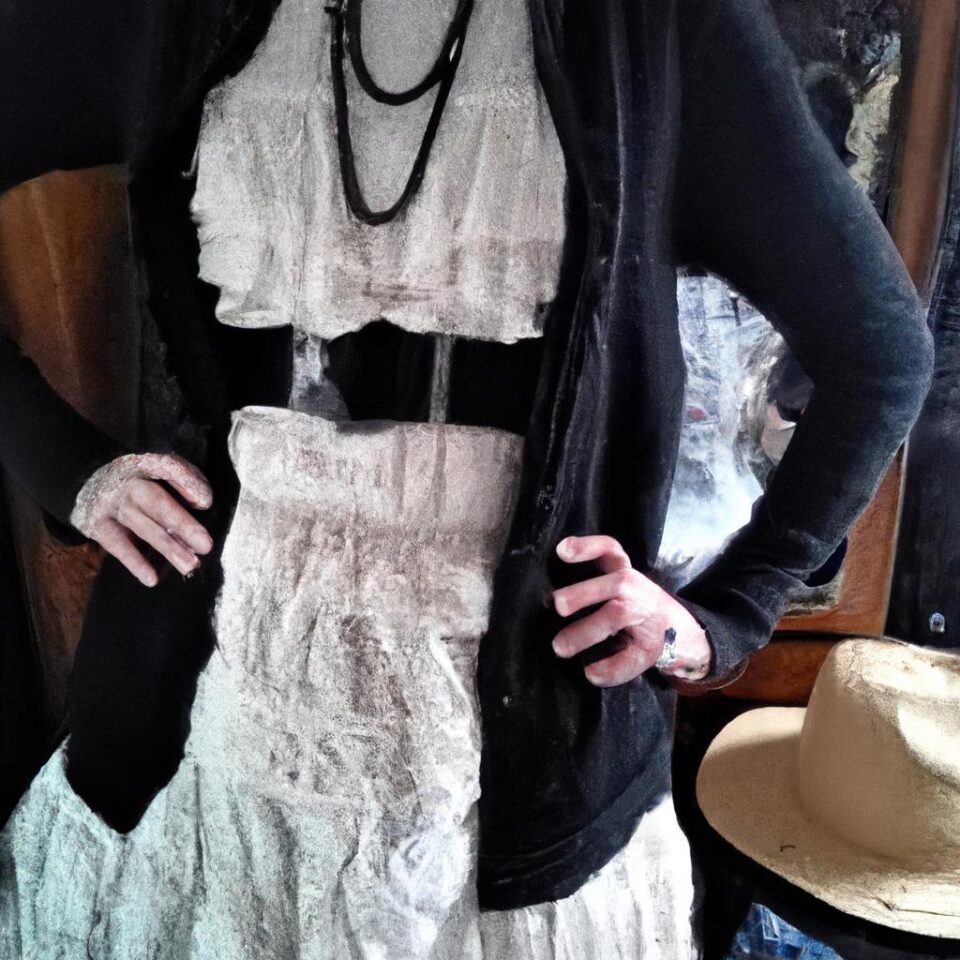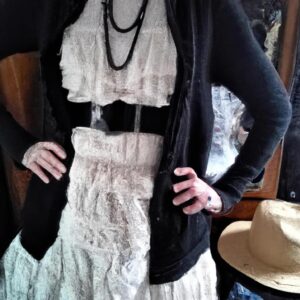Introduction – Defining Fashion and Its Evolution
Fashion is a way of expressing ourselves and reflecting the culture around us. It’s a form of art that dates back thousands of years and has evolved over time. From peasant garments to evening gowns, fashion has adapted to reflect social changes and cultural influences.
The evolution of fashion is important because it shows how we view ourselves, our society, and our planet; whether its changes in technology, politics, or lifestyles, fashion provides us with a unique insight into the past, present, and future.
Ancient Fashion History
Clothing has been around since the beginning of human existence, with the earliest interpretations of fashion dating back to the Stone Age. Early peoples used animal skins and fur to cover themselves during the cold months. As technology developed, so did fashion, with ancient civilizations utilizing loom weaving to create intricate patterns and adornments with fabric. Archaeologists have found evidence that reveals a wide array of colors and textures used in clothing from this era.
Ancient Egyptians are known for their elaborate and colorful clothing, which was made of linen, wool, and cotton. This clothing could be accessorized with intricate decorations, such as gold jewelry and beadwork. Ancient Greece followed suit with similar styles, creating garments such as the peplos dress from wool and linen, which featured pleating and fastening styles at the shoulders.
The Romans were also very innovative with their fashion, introducing different styles of fabrics and silhouettes that are still popular today. They are credited with creating the first-ever tailored garment by cutting and stitching cloth together to form trousers and tunics. They also utilized leather to craft shoes, sandals, and other accessories that showcased their status.
The Middle Ages
During the Middle Ages, fashion ranged from simple and rustic to lavish and luxurious. Different class systems played a role in the types of clothing and how they were made. Textile production was a key industry during this time period and many of the traditional methods used for fabric production still exist today. Clothing was typically made with natural fibers such as wool or linen, which were woven by hand. Due to the lack of factories and machinery, creating clothing was a time-consuming process.
The fashion trends of the Middle Ages included ornate gowns and cloaks, often equipped with hoods and intricate patterns. Class played a major role in the clothing worn during this era – from peasants to royals, the details of their outfits signified which social class they belonged to. Women’s fashion featured intricate corsets and loose-fitting gowns while men wore tunics and cloaks. As laws for clothing became more strict during the Middle Ages, individuals’ perception of fashion changed and the silhouette of clothing began to alter.
The Renaissance – A Foundation for the Development of Modern Fashion
Fashion during the Renaissance saw major advancements, from fabrics to silhouettes. The 15th and 16th centuries gave rise to new technologies, such as the foot-treadle spinning wheel and the horizontal loom that provided finer cloth and larger production capabilities. During this period, clothing was seen as a status symbol, and wealthier individuals were able to access fashionable fabrics, colors, textures, and styles. Dress codes were frequently used to dictate what types of clothes different social classes could wear, creating a socioeconomic gap in fashion. Popular silhouettes of the era reflected the aristocratic designs of the upper class, featuring higher waists, tighter corsets, and longer skirts.
The Renaissance is often credited with laying the foundation for modern fashion. Trends became easier to spread across Europe due to improved communication networks and the invention of the printing press. Famous figures such as Queen Elizabeth I of England and Catherine de Medici helped to popularize various trends, including exaggerated sleeves, caps, and bodices. As fashion became more accessible, it also started to be used as a means of personal expression. This is still a major part of today’s fashion industry.
Baroque and Rococo Styles
Rococo and Baroque fashion styles emerged from Europe in the 17th and 18th centuries. These styles featured highly ornate designs, abundant fabrics, and intricate embroidery. During this period, clothing was an expression of wealth, status, and political power.
Highly fashionable women’s clothing consisted of luxurious materials, such as silk, velvet, and lace. Women’s skirts were often wide and full, and they wore decorative stomachers. Men wore coats with elaborate ruffles and cuffs. During this era, both men and women aligned their clothing with specific dress codes based on their profession or social rank.
Clothing was expensive and difficult to make. Thus, many people resorted to renting clothes for special occasions instead of buying them. Moreover, bright colors were a sign of wealth, so the more colorful an outfit was, the richer the person was deemed.
The Rise of Ready-to-Wear
The 19th century saw a huge shift in the way people dressed. For centuries, luxury items like clothing were made specifically for each individual – often requiring multiple fittings and alterations. By the early 1800s, this style of production had become too expensive and labour-intensive for most people. Assembly line production methods using pre-measured fabrics began to be utilized, which allowed clothes to be produced more quickly and at lower costs.
The rise of ready-to-wear meant that clothes could now be mass-produced for the general public at an affordable price. It was during this period that the modern fashion industry began to take shape, introducing the concept of seasonal collections by top designers. This shift enabled fashionable garments to become accessible to people of all backgrounds and incomes.
Mass-Marketed Fashion
In the 19th century, fashion began to move away from exclusive and expensive clothing designed for the wealthy classes. The rise of ready-to-wear garments meant that clothes weren’t just accessible to the elite anymore. Mass-marketed fashion featured affordable creations that could be purchased by people of all income levels, and as a result, the number of people who could take part in the latest fashion trends skyrocketed.
Couturiers—designers of custom-made dresses or costumes—used to be the only ones who could dictate the current fashion trends. However, with the rise of mass-market fashion, this changed. Editorial magazines and advertisements began to influence the way people dressed, making fashionable clothing more accessible and affordable. Mass-market fashion also allowed people from different financial backgrounds the chance to experiment with and express their own personal style.
Sportswear and Streetwear
In the late 19th century, sportswear became popular as the health and fitness craze grew. With the invention of synthetic fabrics, clothing began to be designed with specific activities in mind. Sportswear was usually loose-fitting, practical, and strived for comfort, such as tracksuits and shorts. From this, a casual lifestyle emerged which blended sportswear into everyday fashion.
Streetwear is a product of this casual lifestyle. It is linked to youth culture and hip hop, and is composed of bold, vibrant colors, oversized shapes, and comfortable fabrics. It is often an expression of individual style and identity, and encompasses hooded sweatshirts, denim jeans, and sneakers.
The impact of a casual lifestyle on fashion trends cannot be understated. Sportswear has become part of everyday wear, and streetwear has become a mainstream fashion trend. The relaxed fit of these various garments, combined with their stylish appeal, have changed the way people dress today.
The 20th Century and the Global Influence of Women’s Fashion
The 20th century was a period of immense change in fashion. In the early 1900s, garments were created through traditional stitching and tailoring techniques. These styles had a major influence on today’s fashion trends, with the notable corsetless empire waist dress and costuming for men and women overseen by Parisian couture houses.
Women’s fashion in the 1920s was highly influenced by the Art Nouveau movement. Flapper-style dresses with dropped waists and beaded details showed off the female form, while urban women embraced the comfort and convenience of trousers. The modern world had just started to recognize the changing roles of women, and fashion was reflective of this shift.
The 1930s saw the introduction of luxury fabrics like rayon and taffeta. Hollywood films popularized the glamour of iconic stars such as Rita Hayworth and Marlene Dietrich, inspiring women to dress more aesthetically. 1940s style was marked by a resurgence of femininity in clothing, with padded shoulders and tight waistlines that created an “hourglass” silhouette.
The 1950s ushered in the era of mass-produced clothing thanks to new manufacturing and marketing methods. Popular silhouettes included poodle skirts, pedal pushers and capri pants, while Hawaiian shirts and bright colors highlighted the growing youth culture. By the 1960s, the emergence of youth subculture was a fashion revolution placing emphasis on self-expression and individuality.
1960s Counterculture
In the 1960s, a shift in the social, political, and cultural landscape of the world saw the emergence of several new and innovative styles. The decade was characterized by a vibrant spirit of change, with the youth clashing against the conventional values of their parents’ generation.
The fashion industry also underwent a period of transformation, thanks to the influence of several key figures such as Mary Quant, Pierre Cardin, and YSL, who challenged traditional concepts of beauty and style.
One of the most influential figures of the era was a British model, Twiggy, whose iconic boyish look became the epitome of style for the decade. Her androgynous figure and choppy pixie cut became symbolic of the fashion revolution taking place at the time.
The fashion industry also benefited immensely from the growing popularity of rock and roll. Bands such as The Beatles and The Rolling Stones began to exploit fashion as a way to express themselves and soon fans all over the world were eager to follow their lead and embrace the new ‘hippie’ style.
Finally, in the late 1960s, the world saw the introduction of ‘miniskirts’, arguably the most defining item of clothing of the era. Women around the world embraced this garment and celebrated the newfound freedom that it signified.
Contemporary Fashion
The contemporary fashion industry is a far cry from the traditional designs of the past. From the mid 1960s onwards, fashion began to move away from mass-marketed clothing and started to focus on more creative and individualistic style. New technologies have enabled the introduction of groundbreaking new materials, with bold patterns and colors becoming commonplace in the wardrobe of today’s youth.
In recent decades, fashion icons such as Lady Gaga, Rihanna, and Kanye West have had a huge influence on the industry, creating a whole new ‘streetwear’ look that has taken over the culture. Eco-friendly designers and conscious consumption are also playing an important role in modern fashion, shifting the focus to sustainable materials and practices.
Clothing is no longer just about looking stylish, it’s about making a statement and expressing yourself. Contemporary fashion has become an expression of identity and creativity, while still respecting its roots in history.
Conclusion
Fashion is an ever-evolving art form, from the earliest pieces of clothing made by our ancient ancestors to the innovative styles cultivated by modern fashion icons. Our style and the clothes we choose to wear have always been reflections of our values and who we are. Throughout history, clothing has served to define social standing, political statements, and creative expression. As we look back at the trends and silhouettes of the past, we gain insight into how our style, culture, and technology have impacted each other over time.
From the flashy Baroque and Rococo period through the sophisticated looks of the 1960s, fashion has seen many changes over the centuries. In the 19th century, ready-to-wear items gained popularity, allowing individuals to express their own unique style without having to wait for a custom-made piece. Today, fashion is more accessible than ever with the rise of mass-marketed clothing, sportswear, and streetwear. No matter the era, fashion remains a powerful tool to communicate identity and make bold statements.
comments: 0

